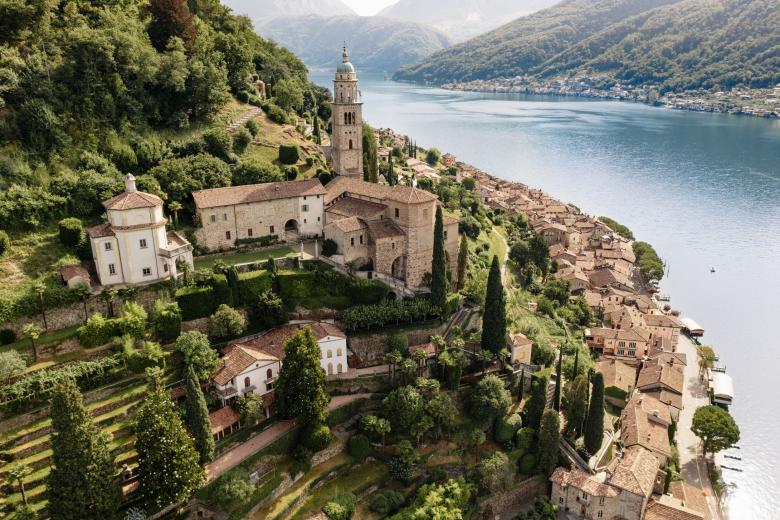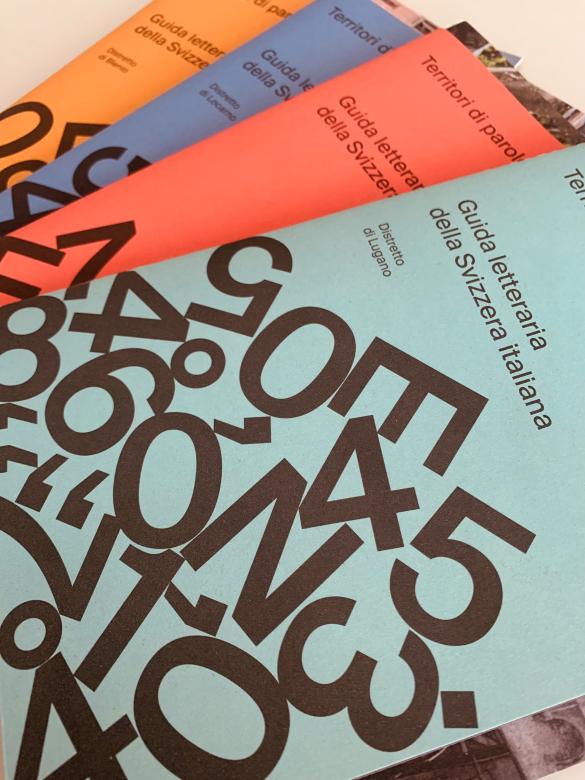Italian-speaking Switzerland, a land of literary inspiration
Did you know that Italian-speaking Switzerland, with its lakes and mountains, features in the works of three giants of world literature? Join us on a literary tour of Italian-speaking Switzerland, stopping in three of the region's most iconic places: Lake Maggiore, Lake Lugano and the Gotthard Pass.
Hemingway and Lake Maggiore
One of the most striking features of the part of Switzerland that lies south of the Alps is its great diversity of landscapes within the span of a few kilometres. Coupled with its italianità – its linguistic and cultural ties to Italy – it is this characteristic that makes this region a jewel in the crown of a country known for its idyllic natural beauty. One need only think of the Locarno region, where a journey of a mere 35 kilometres takes us from the Brissago Islands at Switzerland's lowest point above sea-level, to the village of Bosco Gurin, founded in the 13th century by Walser settlers fleeing religious persecution, to the foot of the 2,863-metre Pizzo Biela.

These landscapes have made a deep impression on hundreds of writers over the years. Novels of love and war, travel diaries and autobiographical accounts, and plaintive poetry have been set against the canvas of the Italian-speaking part of Switzerland. Did you know, for example, that Ernest Hemingway, who was awarded the Nobel Prize for Literature in 1954, was a frequent visitor to Lake Maggiore? And that he used the Swiss border town of Brissago as the setting for the escape scene of medical officer Frederic Henry and nurse Catherine Barkley in A Farewell to Arms? On the run from the Italian military police on charges of desertion after German and Austro-Hungarian forces have broken through the lines at the Caporetto front, one rainy night the two lovers row across Lake Maggiore to Switzerland, where they find refuge in the fishing town of Brissago:
I was sure we were in Switzerland now. There were many houses back in the trees from the shore and up the shore a way was a village with stone houses, some villas on the hills and a church. (...) It was a nice-looking little town. There were many fishing boats along the quay and nets were spread on racks. (...) I pulled hard on the left oar and came in close, then straightened out when we were close to the quay and brought the boat alongside. I pulled in the oars, took hold of an iron ring, stepped up on the wet stone and was in Switzerland.
Ernest Hemingway, A Farewell to Arms, 1929
Borges: from Argentina to Lugano
There is more to Ticino than Lake Maggiore: the canton is also criss-crossed by streams, rivers, Alpine lakes and one other big lake it shares with Italy. Lake Lugano, sparkling amid dramatic mountain peaks, left a mark on the mind and pen of a young Jorge Luis Borges. The future Argentinian short-story writer and poet was just 18 when he moved to Lugano with his family. During the year they spent at the Hotel du Lac, one of his favourite pastimes was to go boating with his sister Norah. Borges would later become one of the most beloved writers of fantasy fiction.
Along with the words I dictate, there will be, I believe, the image of a great Mediterranean lake with long, slow mountains, and the inverted reflection of these mountains in the great lake. That, of course, is my memory of Lugano, but there are also others. One, that of a November morning, not too cold, in 1918, when my father and I read, on a blackboard, in an almost empty plaza, the letters in chalk that announced the capitulation of the Central Empires, in other words, the hoped-for peace. The two of us returned to the hotel and announced the good news (there was no radiophone then), and we did not toast with champagne but with Italian red wine.
Jorge Luis Borges, Atlas, 1984

© Switzerland Tourism / david&kathrin Photography and Film GmbH
Dickens' grand tour
Ticino's two biggest lakes have left a mark on literature – as has the Gotthard Pass, which is also known as the gateway to the Alps.
Between the 18th and 19th centuries, the Gotthard Pass was a high point of the Grand Tour of the continent which scions of the European aristocracy were expected to undertake to round off their education. On their travels, they discovered new places, encountered new cultures and languages, and added to their knowledge of history, the arts, and other subjects. In 1845, Charles Dickens, whose pen gave birth to Oliver Twist and David Copperfield, also set off on the Grand Tour. The journey was meant, but failed, to offer him a break from his literary labours. Unable to put down his pen, Dickens wrote many letters to his friend and future biographer John Forster. On his return to London, he collected his travel notes and published them as a travel journal.
We came over the St. Gothard, which has been open only eight days. The road is cut through the snow, and the carriage winds along a narrow path between two massive snow walls, twenty feet high or more. Vast plains of snow range up the mountain-sides above the road, itself seven thousand feet above the sea; and tremendous waterfalls, hewing out arches for themselves in the vast drifts, go thundering down from precipices into deep chasms, here and there and everywhere: the blue water tearing through the white snow with an awful beauty that is most sublime.
Charles Dickens, Letters from Italy, 1845
A literary guide to Italian-speaking Switzerland
Besides Hemingway, Borges and Dickens, the Italian-speaking part of Switzerland has been a source of inspiration for hundreds of other authors and thousands of works of literature. With their own unique perspectives, these writers have introduced Ticino to the world – from Samuel Butler's 19th century travel blog-style reviews, including his recommendation of the Hotel Mendrisio ("kept by Signora Pasta, which cannot be surpassed for comfort") to Eugenio Montale's pronouncement that Ascona was the 'Capri of the North'. The gateway to this immense cultural heritage is the Literary Guide to Italian-speaking Switzerland (it), a project launched by the Ufficio dell'analisi e del patrimonio culturale digitale del Cantone Ticino (Office for the Analysis and Digital Cultural Heritage of the Canton of Ticino). The idea is simple: the guide makes a wealth of information available to the public in the form of a literary map and a series of thematic booklets.

© Ufficio dell’analisi e del patrimonio culturale digitale del Cantone Ticino
Italian-speaking Switzerland has made a mark on world literature: more than 2000 literary quotation and 600 authors are featured in the Literary Guide to Italian-speaking Switzerland, an initiative funded by a federal support programme for Italian language and culture.




